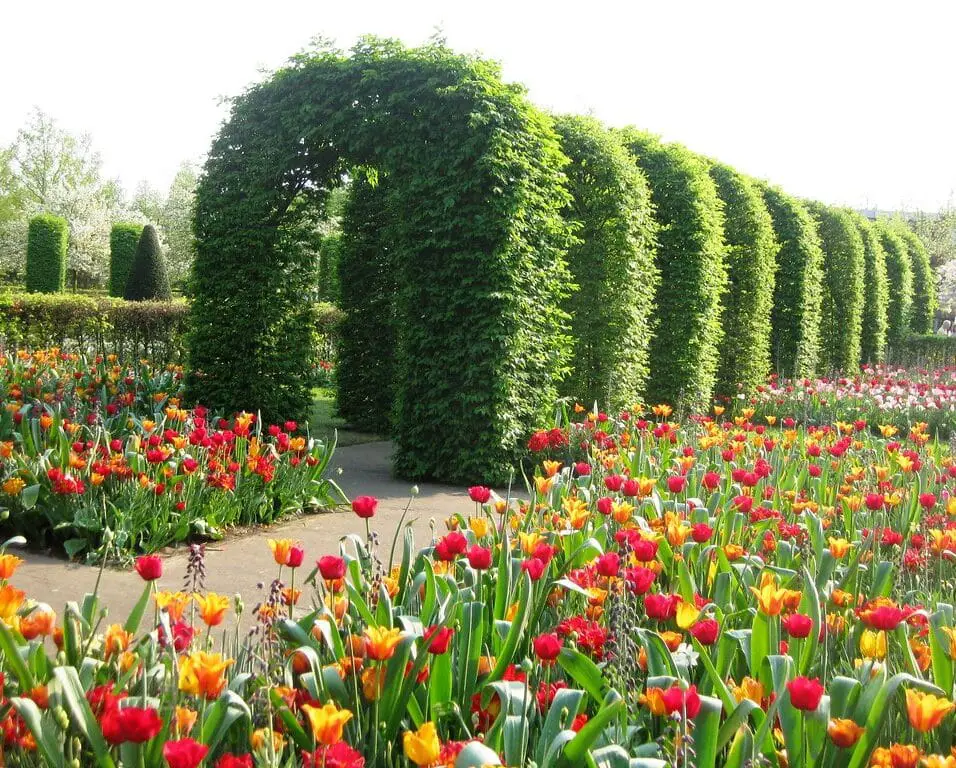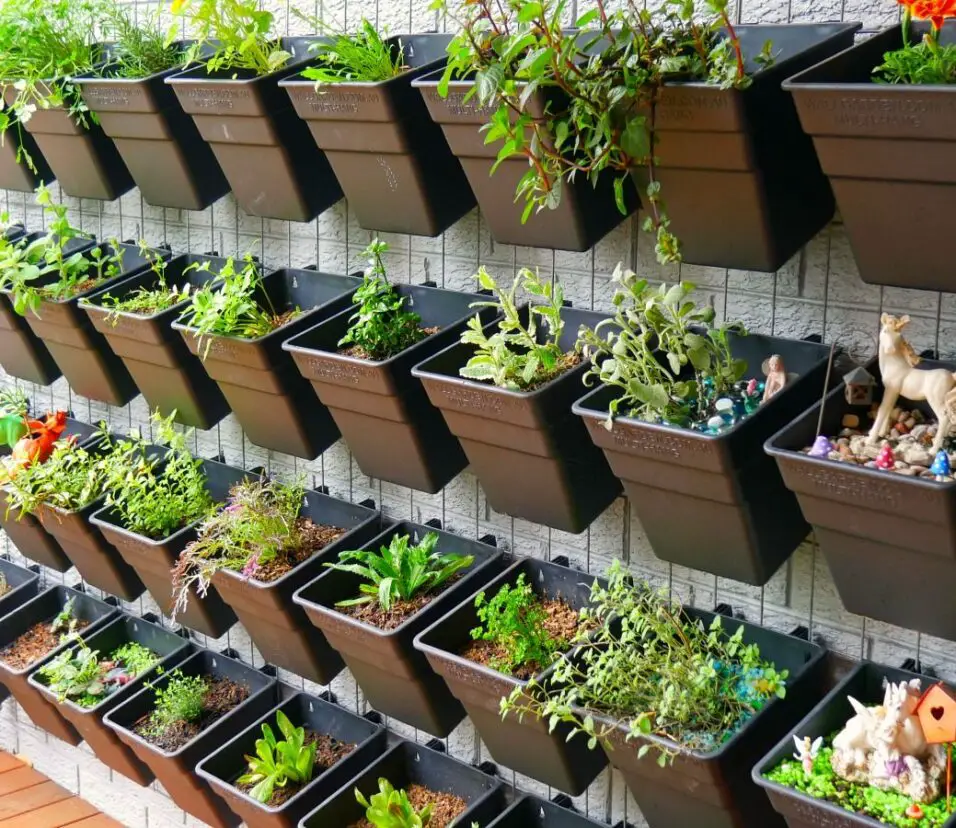What Are Rain Gardens
Introduction
What Are Rain Gardens: Rain gardens are a sustainable and eco-friendly solution to managing stormwater runoff. Instead, it quickly runs off these surfaces, picking up pollutants along the way and overwhelming stormwater systems. This excess stormwater can cause flooding, erosion, and water pollution. Rain gardens offer a solution to this problem by providing a natural and aesthetically pleasing way to manage stormwater.
When properly designed, rain gardens can effectively capture and treat stormwater runoff. They are typically constructed in low-lying areas or depressions in the landscape, allowing water to collect and slowly percolate into the soil. The gardens hose are planted with a variety of native plants and grasses that have deep root systems, which help to absorb and filter the water. These plants also provide habitat for birds, butterflies, and other wildlife, enhancing biodiversity in urban areas.
The benefits of rain gardens extend beyond stormwater management. They can also help to improve water quality by removing pollutants such as sediment, nutrients, and heavy metals from the runoff. Additionally, rain gardens can reduce the need for irrigation, as they rely on natural rainfall to sustain the plants. This can help conserve water resources, especially in areas prone to drought.

What is the concept of rain gardens?
Rain gardens don’t have a lot of plants to store water and help it soak in.
Rain gardens that are sustainable handle stormwater. Native plants in rain gardens absorb the water that falls on them. Taking care of stormwater is a lot like planting. Chemicals, pesticides, and oil are bad for water. Before stormwater comes in, rain gardens clean the rainwater. A lot of them use depressions that hold water. Small basins made of soil, compost, and gravel clean the water in the yard.
Native roots stop rain gardens from washing away and help water get in. Locally adapted plants don’t need much care once they’re established. Birds, insects, and other species live in them, which increases the variety of life in cities. Rain gardens do more than just handle rainwater. A lot of rain makes floods less likely. Runoff gets rid of nutrients and pollutants, which makes the water better. A rain garden makes some areas of a neighborhood green.
What are the objectives of rain garden?
A rain garden diverts runoff into the garden, which allows it to soak into the ground. In addition to cleaning the water, a rain garden can help prevent flooding. They are an important tool in managing stormwater and preventing pollution from entering our waterways. The objectives of rain gardens are multifaceted and include both environmental and practical goals.
One of the primary objectives of rain gardens is to reduce stormwater runoff. Rain gardens help to slow down and capture this runoff, allowing it to infiltrate into the ground. This helps to recharge groundwater supplies and reduce the volume and velocity of stormwater entering our waterways.
Another objective of rain gardens is to improve water quality. As stormwater flows over impervious surfaces, it picks up pollutants such as oil, fertilizers, and pesticides. These pollutants can have detrimental effects on aquatic ecosystems. Rain gardens act as natural filters, removing pollutants from stormwater before it reaches our streams, rivers, and lakes. The plants and soil in rain gardens help to absorb and break down these pollutants, improving the overall quality of our water resources.
In addition to their environmental benefits, rain gardens also have aesthetic and educational objectives. Rain gardens can enhance the beauty of a landscape, providing a visually appealing and functional feature. Rain gardens also serve as educational tools, demonstrating the importance of sustainable stormwater management and providing opportunities for community engagement and learning.
What is the role of rain garden in water recharge?
How well a hydraulic rain garden works. Infiltration devices slow down runoff, fix the water cycle, and bring groundwater back to life over time.
It saves water to have a rain garden. Native plants in the small dip soak up water from the roof, the road, and the hard surface. Rain gardens slowly remove pollution, lower the amount of water that runs off during heavy rain, and fill up groundwater.
Through rain gardening, water can be saved. When rainwater from hard surfaces goes into storm drains, it can cause flooding and damage. Aquifers get water from rain gardens. In rain gardens, the dirt cleans the water. The soil and plants in rain gardens clean the silt, nutrients, and pollutants that come from streams and lakes. Filtration is good for marine life.
Rain gardens do more for the environment than just collect rainwater. Cutting down on flow speeds up erosion and floods. Rain plants that soak up water save water and watering. Birds and butterflies like to visit rain gardens, which is good for the environment and wildlife. Runoff, pollutants, and a light recharge are all gathered in rain gardens. Keep biodiversity and water quality safe while lowering the risk of floods, erosion, and not having enough water. Rain gardens in cities and homes save water.
Is rain garden sustainable?
Rain gardens have gained popularity as sustainable landscaping features that help manage stormwater runoff while enhancing the beauty of outdoor spaces. Incorporating trees and rain plants into these gardens can elevate their functionality and aesthetic appeal.
A rain garden is a type of garden that is designed to capture and absorb rainwater runoff from roofs, driveways, and other hard surfaces. It is a sustainable landscaping solution that helps to reduce stormwater runoff and improve water quality.
One of the main benefits of rain gardens is their ability to reduce stormwater runoff
When it rains, water typically runs off of hard surfaces and into storm drains, which can lead to flooding and erosion. By capturing and absorbing rainwater, rain gardens help to slow down the flow of water and allow it to be naturally filtered and absorbed into the ground. This helps to recharge groundwater supplies and reduce the strain on stormwater infrastructure.
Rain gardens are also beneficial for improving water quality. As rainwater runs off of hard surfaces, it can pick up pollutants such as fertilizers, pesticides, and oil. In addition to their environmental benefits, rain gardens also provide aesthetic and habitat value. This can help to create a more biodiverse and vibrant ecosystem in your backyard.
Rain gardens are a sustainable landscaping solution that can help to reduce stormwater runoff, improve water quality, and provide habitat for wildlife. By capturing and absorbing rainwater, rain gardens help to mitigate the negative impacts of urbanization on the water cycle and create a more sustainable and resilient environment.
How rain gardens can improve soil ecology?
Benefits of a Rain Garden
A rain garden diverts runoff into the garden, which allows it to soak into the ground. As it goes into the ground, the environment works to filter out toxic chemicals, thereby improving the quality of local water. Rain gardens are becoming increasingly popular as a way to manage stormwater runoff and improve soil ecology.
One of the ways that rain gardens can improve soil ecology is by reducing erosion. When rainwater runs off hard surfaces, it can pick up pollutants such as oil, pesticides, and fertilizers, which can then be carried into nearby water bodies. By capturing and absorbing this runoff, rain gardens help to prevent these pollutants from entering the soil and water, thus reducing the risk of contamination.
In addition to reducing erosion, rain gardens can also help to improve soil structure
The plants and grasses in rain gardens have deep root systems that help to break up compacted soil and improve its ability to absorb and retain water. This can be especially beneficial in urban areas where soil is often compacted due to construction and heavy foot traffic.
Rain gardens can promote the growth of beneficial microorganisms in the soil. These microorganisms, such as bacteria and fungi, play a crucial role in breaking down organic matter and releasing nutrients that are essential for plant growth. By providing a habitat for these microorganisms, rain gardens can help to enhance soil fertility and overall ecosystem health.
Overall, rain gardens are a sustainable and effective way to manage stormwater runoff and improve soil ecology. By reducing erosion, improving soil structure, and promoting the growth of beneficial microorganisms, rain gardens can help to create healthier and more resilient ecosystems.
Rain gardens are designed to capture and absorb stormwater runoff from impervious surfaces such as roofs, driveways, and sidewalks. They function by collecting rainwater and allowing it to slowly infiltrate into the ground, rather than flowing directly into storm drains or nearby water bodies. This process helps to reduce the volume and velocity of stormwater runoff, which can help prevent flooding and erosion.
When it rains, the water that falls onto the rain garden is filtered through layers of soil, gravel, and plants. These layers act as natural filters, removing pollutants and contaminants from the water. The plants in the rain garden also play a crucial role in managing stormwater runoff. Their roots help to absorb excess water and nutrients, while also providing stability to the soil, preventing erosion.
What are the benefits of implementing rain in urban areas?
Implementing rain gardens in urban areas can bring numerous benefits. Firstly, they help to manage stormwater runoff, reducing the risk of flooding and erosion. By capturing and absorbing rainwater, rain gardens can also help to recharge groundwater supplies, which is especially important in areas with limited water resources.
Rain gardens can improve water quality by filtering out pollutants and contaminants from stormwater runoff. This helps to protect nearby water bodies, such as rivers and lakes, from pollution. In addition, rain gardens can enhance biodiversity by providing habitat for various plants and animals. They can also improve the aesthetic appeal of urban areas, adding green spaces and enhancing the overall landscape.
What are the benefits of implementing rain in urban areas?
Rain gardens offer numerous benefits when implemented in urban areas. Firstly, they help to manage stormwater runoff by capturing and absorbing rainwater. This reduces the amount of water that enters the stormwater system, which can help prevent flooding and reduce the strain on infrastructure.
Additionally, rain gardens act as natural filters, removing pollutants and contaminants from the water as it infiltrates the soil. This helps to improve water quality in nearby water bodies, such as rivers and lakes. By reducing the amount of pollutants that reach these water bodies, rain contribute to the overall health and sustainability of the ecosystem.
Rain gardens provide habitat for various wildlife, including birds, butterflies, and beneficial insects. These green spaces can help support biodiversity in urban areas, which is important for maintaining a healthy and balanced ecosystem. In addition, rain can enhance the aesthetic appeal of urban areas, adding beauty and greenery to otherwise concrete-dominated landscapes.
Can rain be customized to suit different types of landscapes?
Yes, rain can be customized to suit different types of landscapes. The design and construction of a rain garden can be tailored to fit the specific characteristics of the site, such as the soil type, slope, and available space. This flexibility allows rain to be implemented in a variety of settings, including residential yards, commercial properties, and public spaces.
When customizing a rain garden, it is important to consider the local climate and rainfall patterns. The size and depth of the rain garden should be designed to accommodate the average amount of rainfall in the area. Additionally, the selection of plants should be based on their ability to thrive in the specific conditions of the landscape, such as sun exposure and soil moisture.
Are there any specific plants or vegetation that are commonly used in rain?
There are various rain-use plants and vegetation. These plants are chosen for their ability to absorb and filter stormwater runoff and thrive in wet and dry climates. Switchgrass and little bluestem, popular rain plants, have extensive root systems that maintain soil and prevent erosion. We use black-eyed susans and purple coneflowers because they attract pollinators and beautify the rain garden.
Rain sometimes includes buttonbush and winterberry plants together with grasses and wildflowers. The extensive root systems of these bushes absorb surplus water and provide wildlife habitat. In rainy weather, willows and red maples are employed for shade and stormwater runoff reduction.
Overall, the specific plants and vegetation used in rain will vary depending on the climate, soil conditions, and desired aesthetic of the garden. However, it is important to choose plants that are native to the region and have the ability to tolerate both wet and dry conditions. By selecting the right plants, rain can effectively manage stormwater runoff and provide numerous environmental benefits.
How do rain contribute to improving water quality in nearby water bodies?
Rain play a crucial role in improving water quality in nearby water bodies. When it rains, stormwater runoff carries various pollutants such as sediment, fertilizers, pesticides, and other contaminants from urban areas into rivers, lakes, and streams. These pollutants can have detrimental effects on aquatic ecosystems and human health. However, rain act as natural filters that help remove these pollutants before they reach the water bodies.
One way rain improve water quality is through the process of infiltration. As stormwater flows into the rain garden, it is absorbed by the soil and undergoes filtration. The soil acts as a sponge, trapping and retaining pollutants while allowing clean water to percolate into the ground. This process helps to reduce the amount of pollutants entering nearby water bodies, ultimately improving their water quality.
Additionally, rain promote the growth of vegetation, which further aids in improving water quality. The plants in rain help to stabilize the soil, preventing erosion and reducing the amount of sediment that reaches water bodies. They also take up excess nutrients like nitrogen and phosphorus, which are often found in fertilizers, thereby reducing the risk of nutrient pollution in water bodies. By providing habitat for beneficial insects and microorganisms, rain also contribute to the overall ecological health of nearby water bodies.

Conclusion
Rain are a sustainable and eco-friendly solution to managing stormwater runoff. These gardens are designed to capture and filter rainwater, allowing it to slowly infiltrate into the ground rather than flowing into storm drains and eventually polluting nearby water bodies. By creating a natural and beautiful landscape feature, rain not only help to reduce flooding and erosion but also provide habitat for wildlife and improve the overall aesthetics of an area.
One of the key benefits of rain gardens is their ability to improve water quality. As rainwater flows over impervious surfaces such as roads, parking lots, and rooftops, it picks up pollutants such as oil, pesticides, and fertilizers. By directing this runoff into a rain garden, the plants and soil in the garden act as natural filters, removing these pollutants and allowing cleaner water to seep into the ground. This helps to protect local water bodies from contamination and preserve the health of aquatic ecosystems.
To their environmental benefits, rain also offer economic advantages. By reducing the amount of stormwater runoff that needs to be managed by traditional infrastructure, such as storm drains and retention ponds, rain can help to lower the costs associated with stormwater management. Furthermore, the use of native plants in rain can reduce the need for irrigation and maintenance, resulting in long-term cost savings for property owners.
Overall, rain gardens are a practical and effective solution for managing stormwater runoff. They provide numerous environmental, economic, and aesthetic benefits, making them a valuable addition to any landscape. Whether in residential, commercial, or public spaces, rain can play a significant role in promoting sustainable water management and creating a greener and more resilient future.








